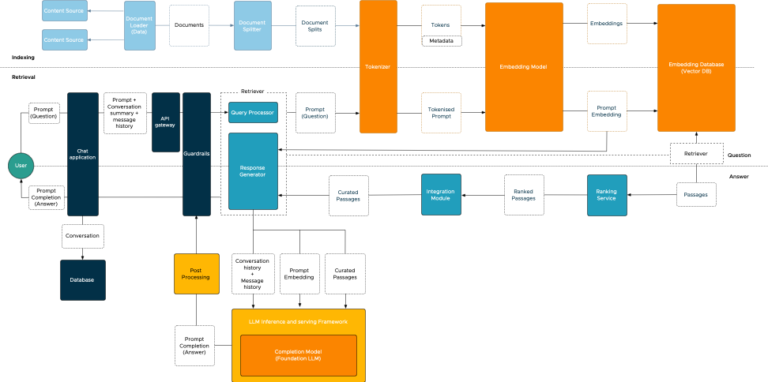The title is a reference to one of the most interesting books I have ever read, Escher, Godel, and Bach. Someone described it as, “Read this book if you like to think about thinking, as well as to think about thinking about thinking”. The three books I want to share my thoughts on are in a sense feeding and shaping the behavior that allows you to clear your mind and focus more on the task at hand.
The three books that I’m referring to are Getting Things Done (Allen), Essentialism (McKeown), and the KonMari (Kondo) method. They are written by three different authors, from three different continents, impacted by three different cultures in different years. Seemingly they have nothing to do with each other, but they complement each other so perfectly it’s downright amazing. After reading all three and re-reading them again, you start to discover hooks where these individual books mesh together
The three books are instrumental in the way on how I live my life. I can imagine other people in IT with a similar travel lifestyle can benefit from reading these books as well. When you travel a lot, you need to get everything in order, as you have to ensure you have the essentials with you. You sometimes have little time to decompress from your last trip and prepare for the next one. You have to keep track of meetings and obligations both in your personal life as well as your professional one. And above all, you want to avoid wasting time on mundane or trivial tasks while being at home and spend your precious time most optimally. Three books have changed my mindset, and they help me guide my decisions. It helps to provide clarity and streamline day-to-day tasks.
When this topic comes up during a conversation, many of the people I talk to end up buying one (or more) of these books, and it seems they catch the same bug, optimizing life, streamlining their behavior. I thought maybe it’s interesting to more people, let’s write an article about something else than hardcore CPU and Memory resource management. Let’s focus on how to manage time and to some extent energy.
Getting Things Done
The overall theme of Getting Things Done (GTD) is helping you manage to focus and therefore time. The main premise of the book in order, any time, everywhere. In your mind but also your surroundings. Instead of getting distracted by things that you need to do, the main rule is to do it immediately or write it down so you can do when appropriate. Writing it down and classifying the tasks helps to clear your mind, it helps you to focus on the task at hand. The author stresses to get rid of context switching.
A perfect example is the junk drawer. Every time you walk past the junk drawer, it reminds you that you need to sort it out. You need to sift through the junk and see what you can use or what can be tossed away. That’s the context switch. Here you are walking around your house thinking about your big project, and there’s that junk drawer again, providing you with the annoying feeling that you really need to sort that out. You don’t want that, you want your mind focused on bigger things, no guilt trips when walking around the house. That’s where the other two books come into play.
Same applies with the GTD method of categorizing tasks. To have oversight of the tasks at hand, you need to have a clear and tidy surrounding. You can’t keep efficient track of things if you have to go through a lot of junk to find the relevant to-do list. This scene in the movie Limitless is a perfect example. The protagonist is a writer who happens to be excellent in procrastinating. This results in no goals finished and an untidy house. When taking the cognitive expanding drugs, he wants to finish his life long goal of writing a book, but before he begins, he realizes that he cannot deal with any distraction and want order around him, resulting in a big cleanup of the house. That’s what GTD wants you to do as well, sans drugs of course.
Essentialism
When cleaning the house, you typically end up throwing things away. A time-consuming job that never seems to finish. Sometimes you come across that you can’t let go, but you also don’t know what to do with it. In the end, it generates a conflicting feeling, introducing a context switch every time you see it. Hooking back into GTD. Essentialism allows you to prevent this by restructuring your behavior when buying new things and helps you to understand the role of your current belongings. Essentialism is not a lot different than minimalism. However, there is one significant difference, and that is the factor of happiness. With essentialism, you get to rate your belongings on the scale of happiness and usefulness. Does it make you happy or is it useful in day to day activities? If answered yes, then keep it. The interesting thing is that the book starts to reshape your decision making – or better said, the selecting criteria when buying something new. After reading it, I began to buy less of the things that I was eyeing because they just didn’t meet both criteria completely.
The time of the acquisition process of an item is extended as you start to look for the object that provides the most happiness while delivering the required functionality. You begin to research the available options more thoroughly, it’s not uncommon to come to the conclusion that it’s better to approach the “problem” differently. You start to drive towards the essence of the problem, what am I solving here? Is there a better way. This ties in with a mindset that has been introduced by the book of Michael Hammer, reengineering the corporation. A fantastic book about redesigning processes, but I’ll cover that book another time. Another benefit of the elaborate purchase process is the occurrence of (re)buying a similar product, or actually the lack off. We’ve all bought a similar object after the first one because the current one wasn’t living up to its expectation or isn’t functioning properly. As you do your due diligence, you analyze the problem and research the best “tools” available. This can go as far as understand your preference of tactile feel of your cutlery. Trust me, you can go very far with applying this pattern of behavior. As a result, you surround yourself with a minimal set of objects that satisfy your needs perfectly. The stuff you have makes you very happy while decluttering your home as much as possible.
Another example is my collection of Air Jordan shoes. Completely unnecessary, but they bring me joy. I collected these from the period when I played basketball myself. In the beginning, it was almost like a free-for-all, get the next version that is released. Buying it because you can (almost must). After reading essentialism, I reviewed my collection. Yes, collecting specific models makes me happy, but most ones that I have are not meeting the criteria of some of the special ones. In result, I reduced my collection by 70%, sold them so others can have them while reducing “footprint” of the collection in the house. I applied focus to the collection. To this day, with everything that I buy I ask myself: Do I need it? And is this the best I can obtain? What I learned is that the majority of objects acquired after reading essentialism have a longer lifespan than buying the first thing you come across when discovering the need for it. It improves the sustainability of your household tremendously. In short, you end up with a lot less stuff in your house, making it easier to get it organized and clean, increasing or maintaining your focus to the choirs at hand.
The Life-changing Magic of Tidying Up (KonMari Method)
This book took the world by storm, I discovered that the author, Marie Kondo, now has a show on Netflix. Before you wonder, I do not talk to my socks and thank them for the days’ work. 😉 The key takeaway I had from reading this book is that junk is stuff that does not has a permanent place in your home. Everything that keeps moving through the house is junk. It generates context switching. To reduce junk, you have to learn some techniques about how to efficiently store things. Some things have exceeded their purpose and can be let go off. This ties back to the essentialism part. Does it make me happy or is it useful? These are excellent criteria to review all your belongings while cleaning up the house. By ending up with less stuff, it frees up room in your home to find permanent places for things that matter. And with a permanent location, it means less time spent on searching for things. Fewer context switches as the junk drawer is now the drawer that houses x, y, and z. I store my phone, wallet, keys in one particular place. When leaving the house, I do not waste time finding the stuff. I can maintain my focus while grabbing the necessities. The time to pack for a trip is significantly reduced, I just have to understand the weather and the purpose of the trip, I know exactly where everything is stored.
These three books helped me tremendously, maybe they can be of help to you as well, give them a try. Please leave a comment about the books that structurally changed your perception on how to deal with these type of things, hopefully, it expands the must-read book list of others and me.



